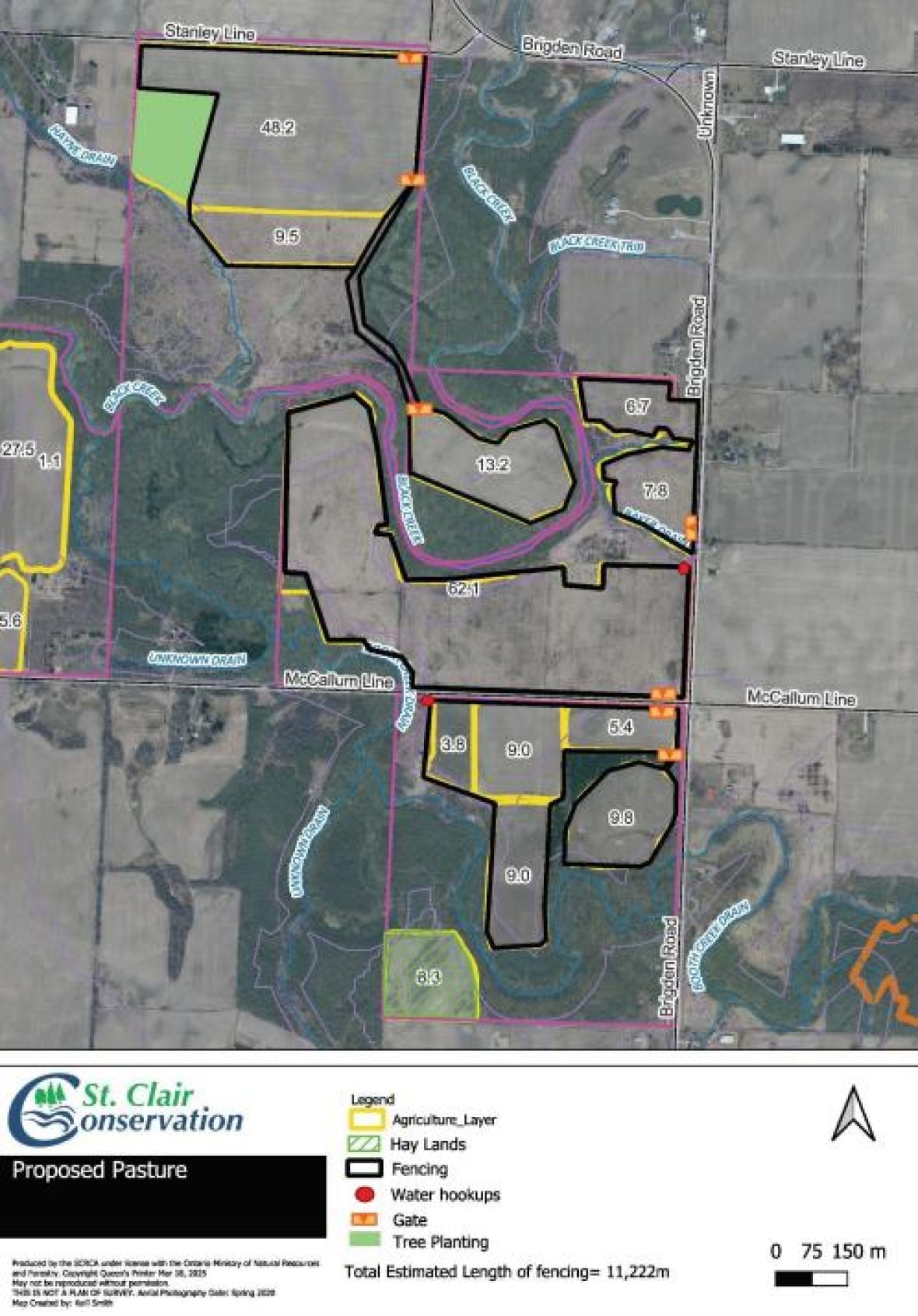Beef farmers team up with conservation authority for Lambton County community pasture

A deal struck between a southwestern Ontario cattlemen's association and a conservation authority promises to do wonders for Lambton County's beef farmers — and for conservation efforts.
The Lambton Cattlemen's Association (LCA) and the St. Clair Region Conservation Authority (SCRCA) have reached an agreement to establish a sizeable community pasture on land owned by the conservation authority.
"It'll be quite the feather for the cattlemen, and for the conservation authority when we get this all pulled together," said Chad Anderson, the LCA's president. "We're very excited for it."
While community pastures are nothing new, it's a first for southwestern Ontario, Anderson said, and the first time a community pasture has been owned by a conservation authority while being rented out to farmers, according to the SCRCA.
Community pastures are often used as a way to reduce cost pressures on farmers, allow them to use their land for other uses, increase grazing capacity and more.
This one in particular is being established with young farmers in mind, according to Anderson.
"Our first goal is to see an increase in the beef cow herd in Lambton County, and our second goal is to prioritize young farmers," Anderson said.
As farmers go, Anderson said anyone under 40 can be considered young.
"With the cost of [farm]land and the competitiveness of it, this gives a younger producer an opportunity to grow his herd or at least improve his economics," Anderson said.
As for the goal of increasing herd sizes, Anderson said the pasture will only be for the breeding herd. The pasture is 12 kilometres north of Wallaceburg.
The currently agreed-upon pasture land covers 184 acres. While some of it is ready to go in terms of already being grassland, some needs to be re-seeded, and all of it requires fencing.
A report that went to the SCRCA board last month says that fencing will cover an 11-kilometre perimeter at a cost of $170,000, paid for by the LCA.
The land itself is being rented at a rate of $125 per acre.

According to Tim Payne, the SCRCA's manager of lands, the agreement is a win for conservation as well.
Most of the land is considered "fragile," meaning it's easily eroded because of steep slopes, poor drainage, or flooding. Instead of retiring the land, it can be converted into pasture, which means both revenue for the conservation authority and stability for the land and its ecosystems.
"Putting that land into permanent cover with the grasses and pasture is certainly beneficial to that land," Payne said. "It'll help with soil health, nutrient cycling, and that will help with runoff."
Anderson said once the pasture is operational, it'll be run by a purpose-built board that decides who can use the pasture and when.
There's lots of interest, he said, so there are some tough decisions ahead.
Looking to the future, Anderson said he hopes the community pasture can be expanded to include the full 600 acres of land that was originally up for consideration.
"We hope we can impress the conservation authority with what we're doing, and they've been great to work with," he said.
cbc.ca




